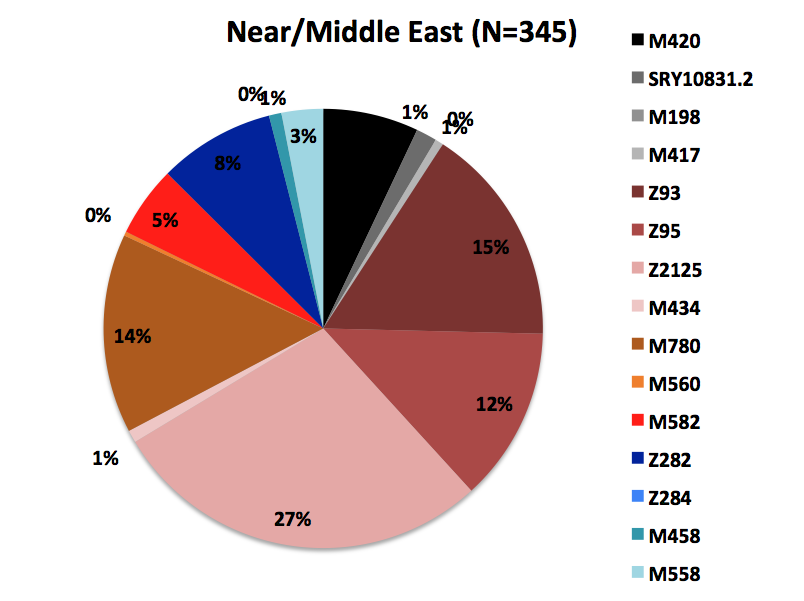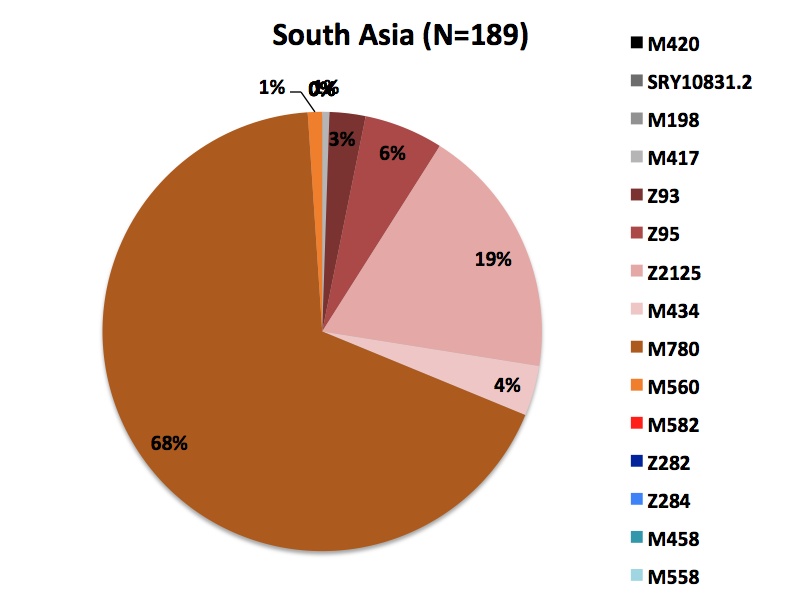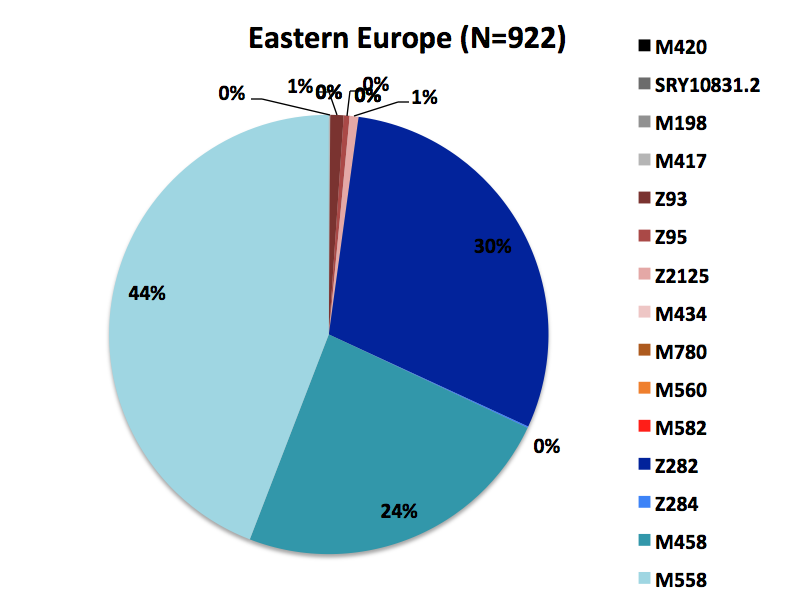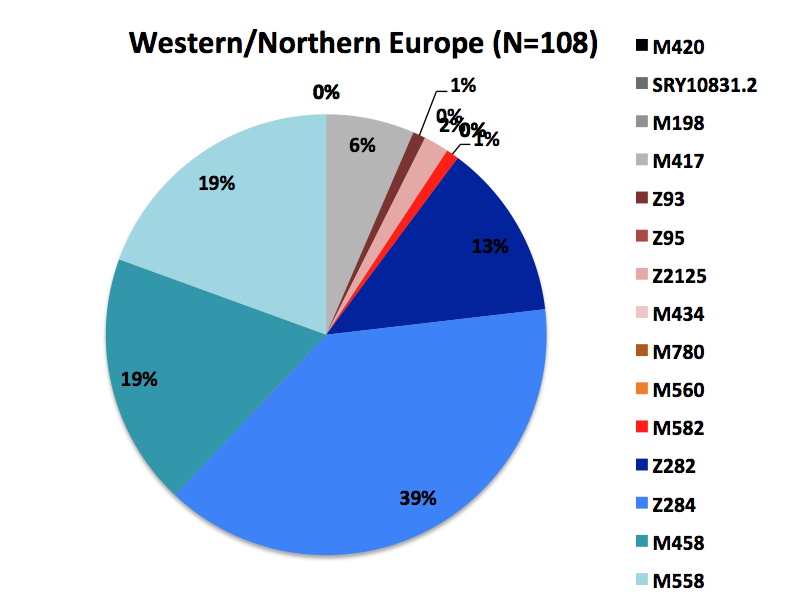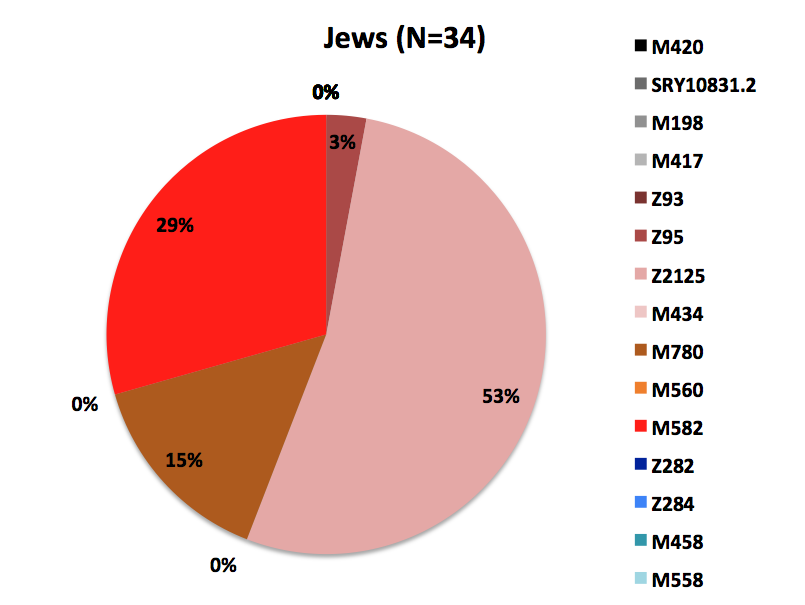Install the app
How to install the app on iOS
Follow along with the video below to see how to install our site as a web app on your home screen.

Note: This feature currently requires accessing the site using the built-in Safari browser.
You are using an out of date browser. It may not display this or other websites correctly.
You should upgrade or use an alternative browser.
You should upgrade or use an alternative browser.
Corded Ware Culture Signals Population Change in Europe
- Thread starter Angela
- Start date
Alan
Elite member
- Messages
- 2,517
- Reaction score
- 450
- Points
- 0
- Ethnic group
- Kurdish
- Y-DNA haplogroup
- R1a1a1
- mtDNA haplogroup
- HV2a1 +G13708A
You're making my point for me. Saying that a particular haplotype was in a particular location at a particular time does not prove that a downstream version must have evolved in that location. And that was the only point I was really making. Even if Goga can prove that some R1a* types were living in Iran 15000 years ago, that doesn't prove anything about where Z283 and Z93 evolved.
Sure that doesn't prove it but the point what makes an Pontic_Caspian Steppe origin of R1a* unlikely is that it lacks z93 and anyother upstream R1a in that region. So we would have to assume R1a* migrated from the Steppes into West and South_Central Asia and than died out in it's original homeland. That would be too much of coincidence for my taste.
So no I rather stay on my theory that P* originated somewhere in Southeast Asia close to South Asia. Moved into South_Central Asia evolved to R* and somewhere between South_Central Asia and West Asia evolved to R1a and R1b.
But thats just my opinion.
LeBrok
Elite member
- Messages
- 10,261
- Reaction score
- 1,617
- Points
- 0
- Location
- Calgary
- Ethnic group
- Citizen of the world
- Y-DNA haplogroup
- R1b Z2109
- mtDNA haplogroup
- H1c
Z93 is not very old. It might happen after the split of IE into West and East (Indo-Iranian) groups in the Steppe.Sure that doesn't prove it but the point what makes an Pontic_Caspian Steppe origin of R1a* unlikely is that it lacks z93 and anyother upstream R1a in that region. So we would have to assume R1a* migrated from the Steppes into West and South_Central Asia and than died out in it's original homeland. That would be too much of coincidence for my taste.
So no I rather stay on my theory that P* originated somewhere in Southeast Asia close to South Asia. Moved into South_Central Asia evolved to R* and somewhere between South_Central Asia and West Asia evolved to R1a and R1b.
But thats just my opinion.
Last edited:
Aberdeen
Regular Member
- Messages
- 1,835
- Reaction score
- 380
- Points
- 0
- Ethnic group
- Scottish, English and German
- Y-DNA haplogroup
- I1
- mtDNA haplogroup
- H4
Sure that doesn't prove it but the point what makes an Pontic_Caspian Steppe origin of R1a* unlikely is that it lacks z93 and anyother upstream R1a in that region. So we would have to assume R1a* migrated from the Steppes into West and South_Central Asia and than died out in it's original homeland. That would be too much of coincidence for my taste.
So no I rather stay on my theory that P* originated somewhere in Southeast Asia close to South Asia. Moved into South_Central Asia evolved to R* and somewhere between South_Central Asia and West Asia evolved to R1a and R1b.
But thats just my opinion.
As has been said multiple times, when we talk about the IE homeland, one of the issues is not where R1a first evolved, but where the separation between Z283 and Z93 occurred. That probably happened about 5000 years ago, just about when the IE folk first started spreading east and west from their steppe homeland.
Aberdeen
Regular Member
- Messages
- 1,835
- Reaction score
- 380
- Points
- 0
- Ethnic group
- Scottish, English and German
- Y-DNA haplogroup
- I1
- mtDNA haplogroup
- H4
Please, please read Karafet June 2014 paper or will it upset you to find that R is not west-asian , but south-east Asia in origin.
The bulk of people who you read that are claiming this marker is R1a or R1b this or that in origin always leave out the subclade , because they want that R1a or R1b to be western . Read the paper to check how ydna trees work
Mal'ta should have been noted as R0 and not R* as he is 71 SNPs away from R1 and 260 SNP's away from R2 . As i said he does not belong to R1 or R2
In human genetics, * is used to denote that someone is a member of a haplogroup and not any of its subclades
On plotting charts he sits on his own
I've read the Karafet paper, and I'd like to note that assumptions can be wrong. When you can show me old DNA from south-east Asia that support the view taken in that paper, then we can talk. And the issue of where R first evolved is not really relevant for this thread anyway. I just mentioned Siberia and Mal'ta Boy to show that results from a much earlier time period aren't really relevant to a discussion of where downstream subclades may have evolved, since people migrate. I'm not sure why some of you have trouble keeping different time periods separate.
Sile
Banned
- Messages
- 5,110
- Reaction score
- 582
- Points
- 0
- Location
- Australia
- Ethnic group
- North Alpine Italian
- Y-DNA haplogroup
- T1a2 -Z19945..Jura
- mtDNA haplogroup
- H95a1 ..Pannoni
I've read the Karafet paper, and I'd like to note that assumptions can be wrong. When you can show me old DNA from south-east Asia that support the view taken in that paper, then we can talk. And the issue of where R first evolved is not really relevant for this thread anyway. I just mentioned Siberia and Mal'ta Boy to show that results from a much earlier time period aren't really relevant to a discussion of where downstream subclades may have evolved, since people migrate. I'm not sure why some of you have trouble keeping different time periods separate.
What do you mean assumptions?, there is always assumptions, that is how we have moved on in the last 10, 20, 30 years ...with assumptions. Its now the current format and will remain the format until the geneticists decide to change it............since its accepted by all geneticts, then we live with it.
see this
http://en.wikipedia.org/wiki/Paragroup#cite_note-vanOven2014-4
vanOven runs all the mtdna and all the ydna for all the genetic papers, they follow this paper , until a point in time that it is proven wrong.
On Mal'ta boy, he is R*..........he has no other subclades and never will be found any other subclades within him. I do not know why people even mention him.
* = no more subclades........end of the line
someone asked to name him R0, but was denied because it was found he had no other markers
http://www.nature.com/nature/journal/v505/n7481/extref/nature12736-s1.pdf
The position of MA-1 on the phylogenetic tree is established by
the state of the 313 basal mutations separating hgs DE and R, where MA-1 has 143
informative positions. Of these, 138 are in the derived and 5 in the ancestral state,
placing MA-1 as a lineage basal to hg R. With only a few exceptions characterized
below, all other informative positions in MA-1 are in the ancestral state, further
supporting the phylogenetic positioning of MA-1 on the tree.
Among the derived markers in the final dataset only a few (11) mutations were
detected that are likely to be false positives based on the phylogenetic analysis, where
it is assumed that recurrent mutation is less likely than a sequencing error. One
position among the 35 private to MA-1 is characteristic of a distant hg – namely
C3c14. Based on current data, 10 additional phylogenetically non-concordant
positions in MA-1 were found – 1 position for hgs E, G, Q, R1b, R1 each, 2 defining
positions for hg I and 3 private mutations for R1b individuals (shown in red on Figure
SI 5a). Additionally, among the mutations originally excluded (the reference-private
mutations), two positions were found where MA-1 is in derived state.
The position of MA-1 on the phylogenetic tree is established by
the state of the 313 basal mutations separating hgs DE and R, where MA-1 has 143
informative positions. Of these, 138 are in the derived and 5 in the ancestral state,
placing MA-1 as a lineage basal to hg R. With only a few exceptions characterized
below, all other informative positions in MA-1 are in the ancestral state, further
supporting the phylogenetic positioning of MA-1 on the tree.
Among the derived markers in the final dataset only a few (11) mutations were
detected that are likely to be false positives based on the phylogenetic analysis, where
it is assumed that recurrent mutation is less likely than a sequencing error. One
position among the 35 private to MA-1 is characteristic of a distant hg – namely
C3c14. Based on current data, 10 additional phylogenetically non-concordant
positions in MA-1 were found – 1 position for hgs E, G, Q, R1b, R1 each, 2 defining
positions for hg I and 3 private mutations for R1b individuals (shown in red on Figure
SI 5a). Additionally, among the mutations originally excluded (the reference-private
mutations), two positions were found where MA-1 is in derived state.
Aberdeen
Regular Member
- Messages
- 1,835
- Reaction score
- 380
- Points
- 0
- Ethnic group
- Scottish, English and German
- Y-DNA haplogroup
- I1
- mtDNA haplogroup
- H4
What do you mean assumptions?, there is always assumptions, that is how we have moved on in the last 10, 20, 30 years ...with assumptions. Its now the current format and will remain the format until the geneticists decide to change it............since its accepted by all geneticts, then we live with it.
see this
http://en.wikipedia.org/wiki/Paragroup#cite_note-vanOven2014-4
vanOven runs all the mtdna and all the ydna for all the genetic papers, they follow this paper , until a point in time that it is proven wrong.
On Mal'ta boy, he is R*..........he has no other subclades and never will be found any other subclades within him. I do not know why people even mention him.
* = no more subclades........end of the line
someone asked to name him R0, but was denied because it was found he had no other markers
It's not an assumption that Mal'ta Boy was an early form of Y haplotype R, since that's what the tests show. It's not an assumption that Mal'ta Boy died without leaving any direct descendants, since his skeleton shows that he died before reaching adolescence. It is an assumption that a child wasn't wandering around Siberia hunting mammoths on his own, but it's a fairly reasonable assumption. And, given how small the Eurasian population was 24000 years ago, and given that R hadn't yet developed into subclades at that point, it's quite reasonable to assume that one of Mal'ta Boy's close relatives was the ancestor of the folk who became R1a and R1b thousands of years later. And that's why so many people mention Mal'ta Boy. As for the paper about R and southeast Asia that you think is conclusive, it seems to me to do a lot of mental gymnastics and unproven assumptions to get to where it gets to.
Maybe you should do a bit of reading about how genetics actually works. I've been reading up on the subject, and it's quite fascinating.
Angela
Elite member
- Messages
- 21,823
- Reaction score
- 12,329
- Points
- 113
- Ethnic group
- Italian
It's not an assumption that Mal'ta Boy was an early form of Y haplotype R, since that's what the tests show. It's not an assumption that Mal'ta Boy died without leaving any direct descendants, since his skeleton shows that he died before reaching adolescence. It is an assumption that a child wasn't wandering around Siberia hunting mammoths on his own, but it's a fairly reasonable assumption. And, given how small the Eurasian population was 24000 years ago, and given that R hadn't yet developed into subclades at that point, it's quite reasonable to assume that one of Mal'ta Boy's close relatives was the ancestor of the folk who became R1a and R1b thousands of years later. And that's why so many people mention Mal'ta Boy. As for the paper about R and southeast Asia that you think is conclusive, it seems to me to do a lot of mental gymnastics and unproven assumptions to get to where it gets to.
Maybe you should do a bit of reading about how genetics actually works. I've been reading up on the subject, and it's quite fascinating.
And there you have it, proving yet again that the one thing that is absolutely necessary for this as for any intellectual endeavor is the ability to think logically. It helps if you can see the forest instead of obsessing on the trees too.
Neolithic European F* didn't extinct, they are in central EuropeIt's strange we find R* in Siberia 24000 years ago, and F* in the Central Europe/Balkans 5000 years ago. Did all the population booms extinctions and evolutions between F and R, happen in Russia?
https://www.familytreedna.com/public/f-ydna/default.aspx?section=yresults
Component ANE peaks among East Caucasians and Burusho peopleSo, as per the paper, the third genetic wave to hit Europe has now been proven to have been manifested in Corded Ware Culture. I'm sure there will be lots of goodies in the paper. I can't wait to read it.
So possibly the people of Corded ware culture brought the Pre-Germanic substrate.
http://www.eupedia.com/forum/thread...-North-Caucasians)-came-from-Northern-Eurasia
More evidence of Corded Ware bringing population change in Northern Europe over at Anthropologie:
http://puvodni.mzm.cz/Anthropologie/article.php?ID=1549
An analysis by David on the topic over at Polishgenes Blog:
Corded Ware people: more versatile and healthier than Neolithic farmers
http://polishgenes.blogspot.com/2014/09/corded-ware-people-more-versatile-and.html
http://puvodni.mzm.cz/Anthropologie/article.php?ID=1549
An analysis by David on the topic over at Polishgenes Blog:
Corded Ware people: more versatile and healthier than Neolithic farmers
http://polishgenes.blogspot.com/2014/09/corded-ware-people-more-versatile-and.html
Last edited:
LeBrok
Elite member
- Messages
- 10,261
- Reaction score
- 1,617
- Points
- 0
- Location
- Calgary
- Ethnic group
- Citizen of the world
- Y-DNA haplogroup
- R1b Z2109
- mtDNA haplogroup
- H1c
Eventually they have turned in fully blown farmers themselves a thousand years later.Corded Ware people: more versatile and healthier than Neolithic farmers
This cultural turnover was mainly caused by climatic changes and collapse of Neolithic farming in this part of the world. Corded Ware nomads were more suited for the harsher conditions and filled the vacuum, so to speak.
MOESAN
Elite member
- Messages
- 5,893
- Reaction score
- 1,296
- Points
- 113
- Location
- Brittany
- Ethnic group
- more celtic
- Y-DNA haplogroup
- R1b - L21/S145*
- mtDNA haplogroup
- H3c
Also in Poland before the Slavic language were spoken Germanic dialects.
So the R1a is possibly Pre-Germanic in Europe.
it's not sure - Corded could have been proto-satem language speakers, close to proto-slavo-baltic tribes -
I see them becoming 'germanic' in N-W Europe after assimilation into a mix of others people where neolitihical descendants were very seldom, and new ones, rather Y-R1b-U106 and Y-I1 people were the bulk -
the first proto-germanic (centum) element could have been some Y-R1b-U152 group (old northwestern I-Ean, akin to celtic, italic, ligurian, germanic) acculturating the others in the Saale area and then into Jutland and Scandia, with a consonnant drift due, perhaps, to Y-I1 population (not to the haplogroup!)
This thread has been viewed 55783 times.

